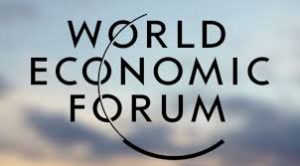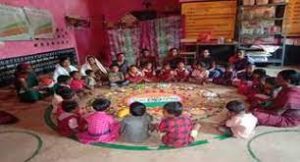Today’s Current Affairs: 3rd May 2023 for UPSC IAS exams, State PSC exams, SSC CGL, State SSC, RRB, Railways, Banking Exam & IBPS, etc
Table of Contents
Auroras : Rare Phenomenon Captured

The Indian Astronomical Observatory (IAO) above Mount Saraswati captured a rare phenomenon as a geomagnetic storm struck Earth’s magnetic field, creating unique auroras.
- The auroras are normally seen at higher altitudes in parts of Alaska, Norway, and other countries.
- This was the first time that the aurora was captured on camera in India by the Indian Astronomical Observatory.
- The 360-degree camera atop the IAO in Ladakh Hanle captured the mysterious phenomenon, which is triggered by an interaction between the plasma particles hurled by the Sun and Earth’s magnetic field.
- Auroras are formed when The sun is ejecting charged particles from its corona, creating solar wind. When that wind slams into Earth’s ionosphere, the aurora is born.
- In the Northern Hemisphere, the phenomenon is called the northern lights (aurora borealis), while in the Southern Hemisphere, it’s called the southern lights (aurora australis).
- The hemispheric asymmetry of the aurora is due in part to the sun’s magnetic field interfering with Earth’s magnetic field.
International Day Of Yoga 2023 : 50-day Countdown Begun

The 50-day countdown to International Yoga Day has begun at Shri Bhavani Niketan College in Jaipur, Rajasthan and Yoga Mahotsav is being celebrated to mark the occasion.
- The Ayush Ministry is organising the event with active support and cooperation of the state government of Rajasthan, local authorities and various institutions with an objective to boost Medical Value Travel through Yoga.
- This year, the Ministry of Ayush is also exploring the possibility of organising Common Yoga Protocol (CYP) demonstrations at important ports across globe covering all oceans and at all functional Health and Wellness Centres (HWCs) spread across the country and Ayush Gram in each state.
- Yoga is the basic foundation of Indian culture which is the biggest medium of self-development.
- Yoga’s journey as an ancient Indian science of healing and exercise started somewhere in the Indus-Sarasvati civilisation in northern India.
7th National Health Accounts : Estimates For India (2019-20)

The Ministry of Health and Family Welfare has released the 7th National Health Accounts (NHA) Estimates for India (2019-20), which was produced by the National Health Systems Resource Centre.
- The NHA estimates are prepared by using an accounting framework based on the internationally accepted System of Health Accounts 2011, provided by the World Health Organization (WHO).
Key Highlights:
- The share of OOPE in total health expenditure has declined from 62.6% in 2014-15 to 47.1% in 2019-20.
- OOPE is the money paid directly by households, at the point of receiving health care.
- This occurs when services are neither provided free of cost through a government health facility, nor is the individual covered under any public or private insurance or social protection scheme.
- GHE’s share in the country’s total GDP increased from 1.13% (2014-15) to 1.35% (2019-20).
- Government Health Expenditure (GHE) GHE constitutes spending under all schemes funded and managed by Union, State, and Local Governments including quasi-Governmental organizations and donors in case funds are channeled through Government organizations. health system as a low Government.
- In GGE the share of health sector spending has steadily increased from 3.94% to 5.02% between 2014-15 and 2019-20.
- General Government Expenditure (GGE) This is a proportion of the share of Government expenditures towards healthcare in the General Government Expenditures and indicates Government’s priority towards healthcare.
- In the Total Health Expenditure (THE) of the country between 2014-15 and 2019-20, the share of GHE has increased from 29% to 41.4%.
- Total Health Expenditure (THE) constitutes current and capital expenditures incurred by Government and Private Sources including External funds.
- The share of SSE on health has increased from 5.7% in 2014-15 to 9.3% in 2019-20.
- Social Security Expenditure (SSE) includes government-funded health insurance, medical reimbursement to government employees, and social health insurance programs.
- PHIE has increased from 3.4 % in 2013-14 to 7 % in 2019-20 estimates out of total Health Expenditure.
- Private Health Insurance Expenditures (PHIE) constitute spending through health insurance companies where households or employers pay a premium to be covered under a specific health plan.
- External/ Donor Funding for health increased from 0.3 % in 2013-14 to 0.5 % in 2019-20 out of total health expenditure.
Who’s Tipping The Scales : IPES Report

A report has been released by the International Panel of Experts on Sustainable Food Systems (IPES) titled “Who’s tipping the scales”, highlights how corporate capture of global Food Governance is increasingly taking place in more visible ways and raising concerns over Bluewashing.
Highlights of the Report:
- There has been a growing presence of firms in governance and spaces, staking claims to be legitimate actors.
- Over recent decades, corporations have succeeded in convincing governments that they must be central in any discussion on the future of food systems.
- The role of private corporations in food governance and decision-making has been normalized by public-private partnerships and multi-stakeholder roundtables while public governance initiatives have become heavily dependent on private funding.
- The UN Food Systems Summit, 2021 was described as a watershed moment in highlighting the importance of corporate influence in public health governance.
- Civil society organizations, food scholars, and social movements have expressed concern that the increased involvement of corporations in food governance could lead to a weakening of the public good and impact the rights of people and communities.
- Corporations have influenced global food governance in visible and invisible ways.
- Corporate influence could be seen in global food systems platforms such as the Global Alliance for Improved Nutrition, the Food and Land Use Coalition, and the Scaling Up Nutrition Movement.
- The Covid-19 pandemic, coupled with Russia’s invasion of Ukraine and Food Inflation, aggravated the issue of corporate involvement.
- The CGIAR (Consultative Group on International Agricultural Research) relied-on funding from private firms and private philanthropic institutions connected to the food industry.
- The Bill and Melinda Gates Foundation which was the CGIAR’s 2nd largest donor in 2020 contributed around USD 100 million, which was far more than what was contributed by individual governments including that of the USA.
- The FAO was also found to have closely collaborated with corporations through industry partnerships throughout its history.
Smart Cities Mission : Extended From June 2023 To June 2024

The Union Housing and Urban Affairs Ministry (MoHUA) has extended the deadline for the Smart Cities Mission from June 2023 to June 2024.
- Smart Cities Mission is an initiative of the MoHUA launched as a Centrally Sponsored Scheme on June 25, 2015.
- To promote cities that provide core infrastructure, and a clean and sustainable environment, 100 cities to be developed as Smart Cities have been selected through a two-stage competition (from January 2016 to June 2018).
- 66 of the cities are small less than 1 million population and are implementing two-thirds of the projects.
- It aims to Drive economic growth through comprehensive work on social, economic, physical and institutional pillars of the city and,Improve the quality of life through smart solutions, Focus on sustainable and inclusive development by the creation of replicable models which act as lighthouses to other aspiring cities.
Future Of Jobs : WEF Report

The report, titled “Future of Jobs,” reveals that the Indian labour market will see a 22% job churn (movement of jobs in an economy), compared to 23% globally.
- The World Economic Forum (WEF) has released its fourth edition (bi-annual) report on jobs and skills, which explores how jobs and skills will evolve between 2023-2027.
- The report tracks the labour-market impact of the Fourth Industrial Revolution, green energy transitions, supply-chain shifts, and more.
Key Findings:
- New Job-creation will be driven by green transition, and localization of supply chains, whereas job destruction in the coming years will be due to slower economic growth, supply shortages and the rising cost of inputs, and the rising cost of living for consumers; 44% of workers’ skills will be disrupted in the next five years; 23% of jobs in the next five years are expected to change.
- Clerical or secretarial roles including bank tellers, cashiers and data entry clerks expected to decline the fastest
- The report recommends investment in learning and training on the job, accelerating automation of processes, expanding the use of contract work, hiring significantly more permanent staff, etc.
- Governments and businesses must invest in supporting the shift to the jobs of the future through education, reskilling and social support structures. Training workers to utilise AI and big data need to be prioritised.
World Economic Forum (WEF) :
- The World Economic Forum est. 1971; HQ: Cologny, Switzerland) is an international non-governmental and lobbying organisation for multinational companies.
- It was founded on 24 January 1971 by German engineer Klaus Schwab
Poshan Bhi, Padhai Bhi Campaign:

Poshan Bhi, Padhai Bhi’ campaign launched by the Women and Child Development Minister Smriti Irani in September 2022.
- The government plans to focus on early childhood care and education in 14 lakh Anganwadi centres, reimagining them as pre-schools providing early learning opportunities.
- Target Age Group is Children under 6 years, especially under 3 years
- National Education Policy Prioritizes foundational literacy and numeracy with emphasis on Child’s Mother tongue
- Recommendations of High-Level Task Force on ECCE (2022) :
- “Rebranding of anganwadis” with upgraded infrastructure;
- Re-designation of Anganwadis workers as Anganwadi teachers, and helpers as childcare workers;
- Creche facilities for children under 3 years;
- Develop common curriculum across different models and emphasis on education in child’s mother tongue.
Shilabhattarika:

Decoding of Copper plates sheds light on the celebrated ancient Sanskrit poetess Shilabhattarika.
- Shilabhattarika was a Sanskrit poetess who lived in the 9th century.
- M. B. Padma, a scholar of the University of Mysore, speculates that she may be the same as Shila-maha Devi, the queen of the 8th-century Rashtrakuta ruler Dhruva.
- The 10th-century poet Rajashekhara praises Shilabhattarika as a leading figure of the Panchali literary style.
- According to Rajashekhara, the Panchali style can be traced to the works of Shilabhattarika, and possibly to some of the works of the 7th-century poet Bana.
- Shilabhattarika has been quoted by several classical Sanskrit literary critics, and her verses appear in most major Sanskrit anthologies.
- She is known to have written at least 46 poems on topics such as “love, morality, politics, nature, beauty, the seasons, insects, anger, indignation, codes of conduct, and the
First Indian To Complete The Golden Globe Race:

Abhilash Tomy created history as the first Indian to complete the Golden Globe Race.
- The Golden Globe Race is being conducted by the K.’s Sir Robin Knox Johnston.
- Objective is to commemorate the world’s first solo non-stop circumnavigation undertaken by him in 1968, onboard the Indian-built boat Suhaili.
- Participants in the GGR are required to sail around the world, single-handed and non-stop.
- The uniqueness of the race is that boat designs and technology newer than 1968 are not permitted.
- Also, the use of the Global Positioning System (GPS), satellite communication and navigational aids are forbidden in the 30,000-mile journey
- The sailors each have a satellite phone and emergency locator beacons to be used for medical emergencies only.
- Entrants are limited to sailing similar yachts, between 32 ft and 36 ft, designed prior to 1988 with a full-length keel with a rudder.
- Equipment similar to what was available to Sir Robin in that first race was to be used.
- 16 sailors from 11 countries depart from Les Sables-d’Olonne, France
Exercise AGNI DAMAN-23:

A mutual firefighting Exercise named AGNI DAMAN-23 was conducted recently.
- EX AGNI DAMAN-23 is a Civil–Military mutual firefighting exercise.
- Objectives is to emphasise the need for awareness and training of men on firefighting and to exercise the capabilities of combined forces of all agencies including military and civil.
- It was conducted at 29 Field Ammunition Depot, Dehu Road under the aegis of Headquarters Southern Command.
- A total of 56 firefighting columns including 32 from civil agencies participated actively in the exercise.
- Drills and procedures including swift response strategy against all types of fire were rehearsed in a coordinated manner.




